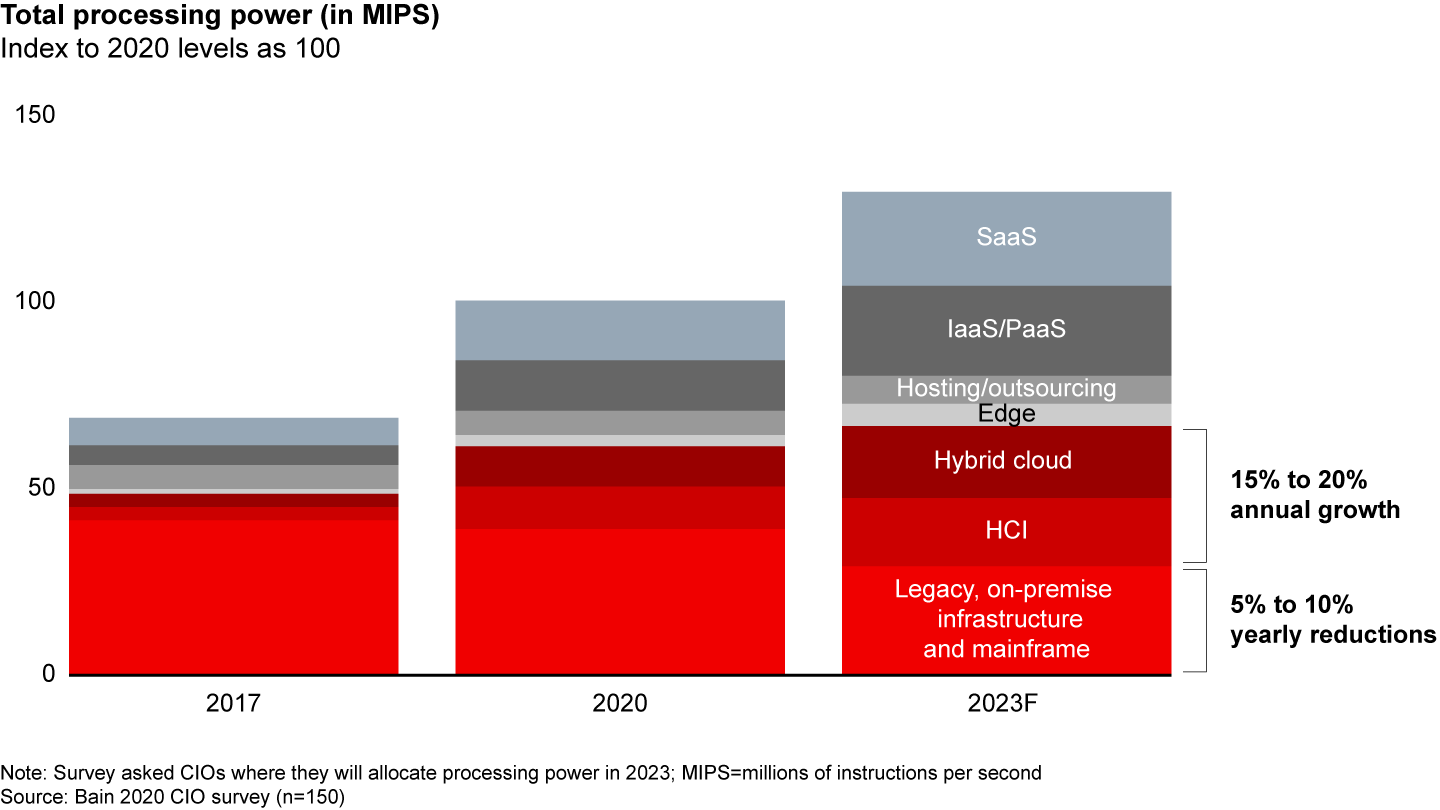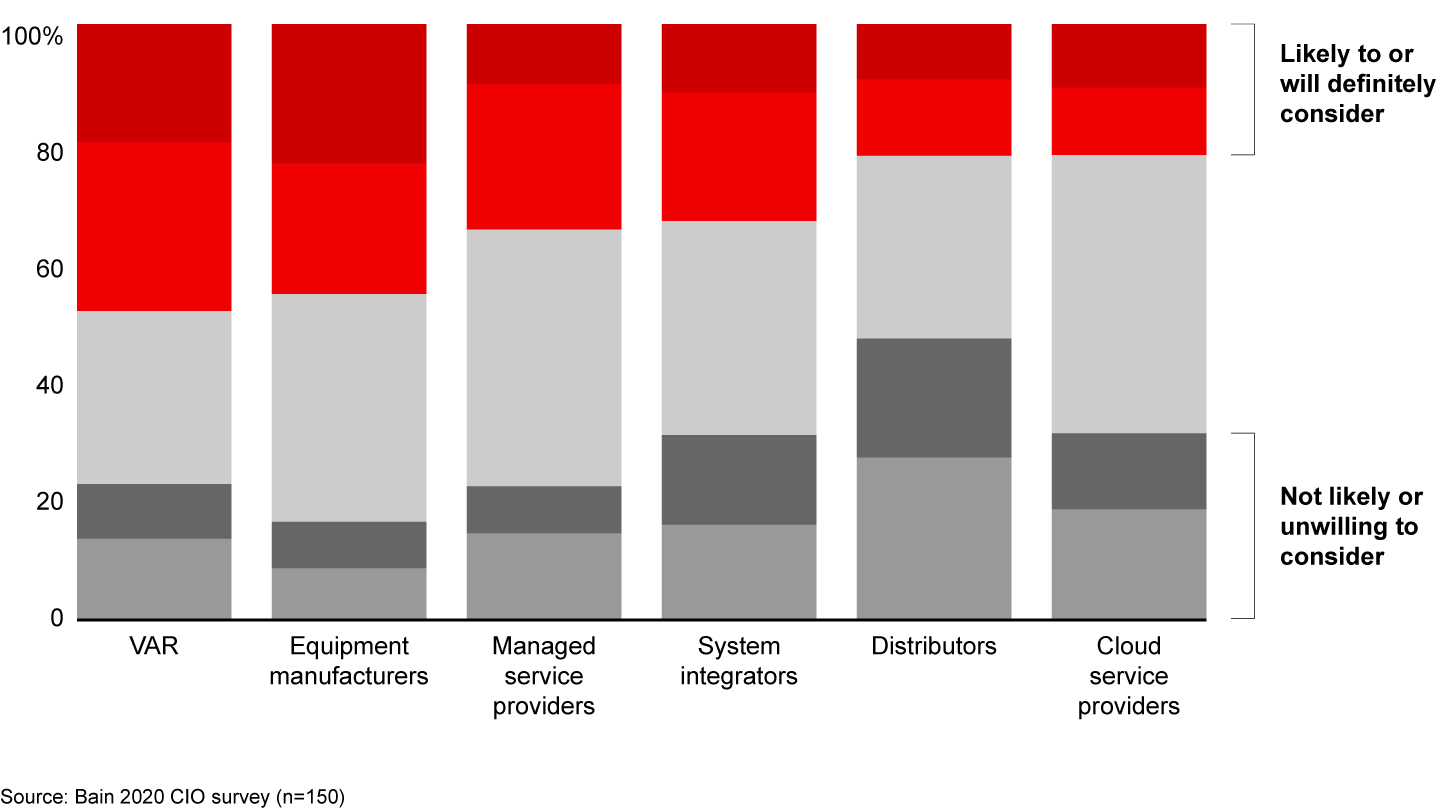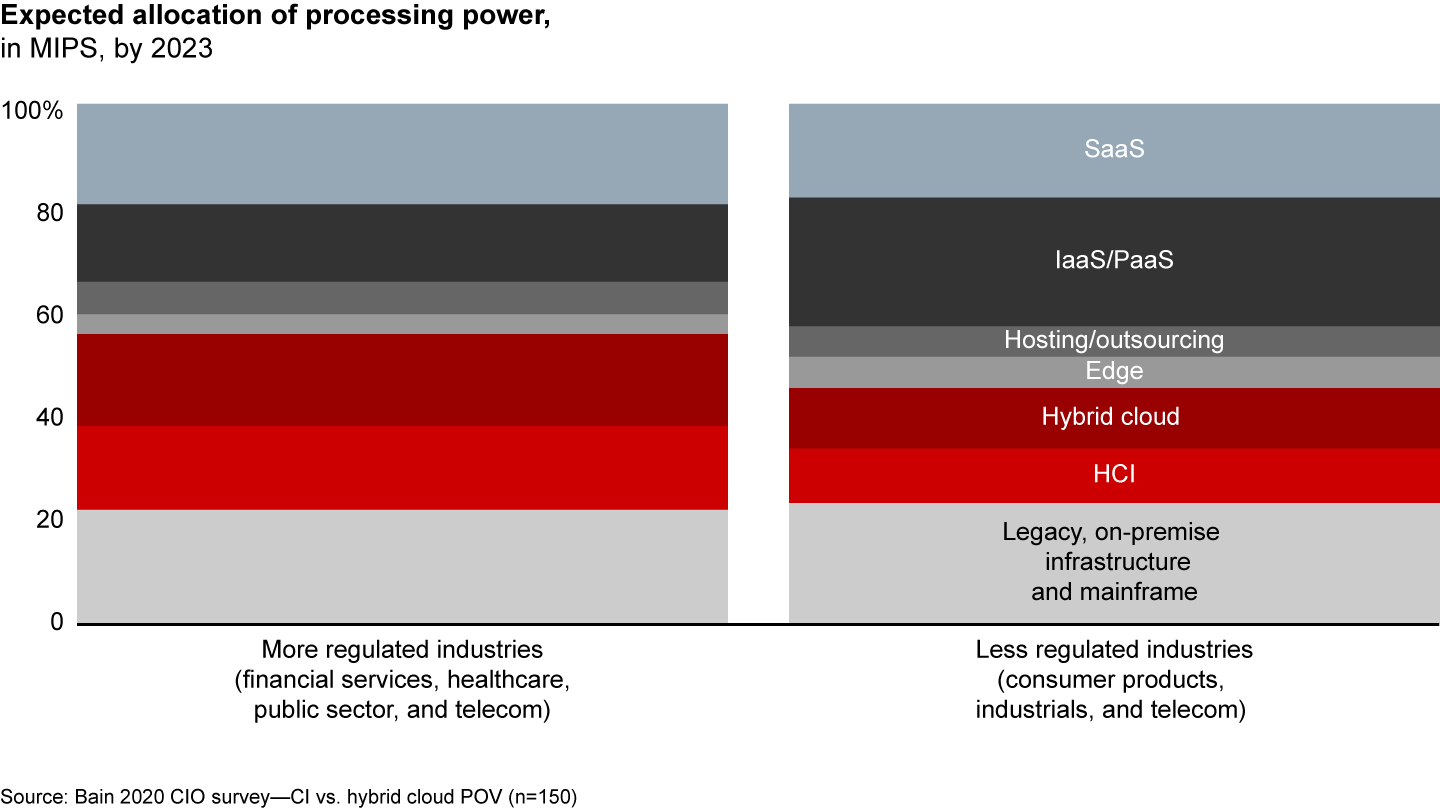Article

It’s not news that legacy, on-premise compute and storage infrastructure is losing ground. What is stunning, however, is the rate at which CIOs predict this to happen. Bain’s recent survey found that these IT leaders expect to cut spending in this category by as much as 25% by 2023, even as overall investment in enterprise technology infrastructure grows.
Just as interesting is that public and hybrid cloud are not the only alternatives to these legacy systems: Hyperconverged infrastructure (HCI), which improves performance with software-defined compute and storage systems, is also gaining ground (see Figure 1).

HCI represents a critical opportunity for technology vendors and the channel, which have had to watch as the cloud service providers took market share and emerged as dominant compute and storage providers over the past five years. Now, the dramatic rise in enthusiasm for HCI over the past few years demonstrates customers’ appetite for a solution that improves performance without having to shift to a cloud platform. It’s more good news for vendors that their customers are most interested in buying HCI solutions from technology equipment manufacturers and value-added resellers, less so from the cloud service providers (see Figure 2).

Whether or not these incumbents can meet the market’s needs will depend on how well they understand their customers’ requirements and whether they are capable of delivering. Since some customers have shown an interest in remaining with their existing providers, the market is theirs to lose. Here are four principles that can help them hold this market.
- Make it easy. SaaS and other as-a-service models have succeeded in part because they are able to take things that were once hard and make them plug-and-play. Solutions require fewer people to get off the ground, and ongoing management of systems is easier and less expensive. Customers of traditional, on-premise hardware and software may want to stick with their current providers, but their patience will wear thin if the alternatives can’t match the simplicity of cloud-based alternatives.
- Adopt a flexible pricing model. A shift from large, periodic capex to a more manageable operating-expense model has been a driving force in the popularity of cloud solutions. HCI vendors and channel partners should offer comparable payment models as an incentive to keep customers.
- Prioritize customers to focus on. HCI is the preferred option for many companies that are not ready to move many of their workloads to the cloud, due to regulatory constraints or other conditions (see Figure 3).
- Focus on future-proof benefits of HCI. When the refresh cycle comes around, many CIOs are eager to address technical debt but still hesitant to shift to the public cloud. HCI and hybrid cloud offer ways to avoid spending on legacy systems while still preserving benefits of on-premise systems.



